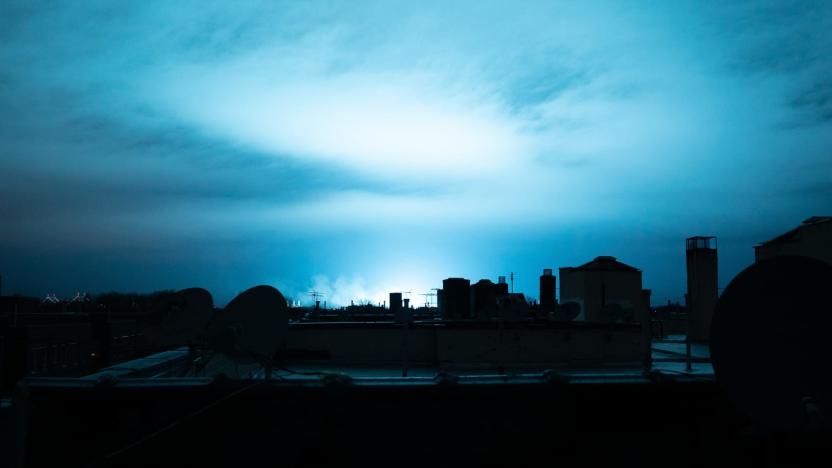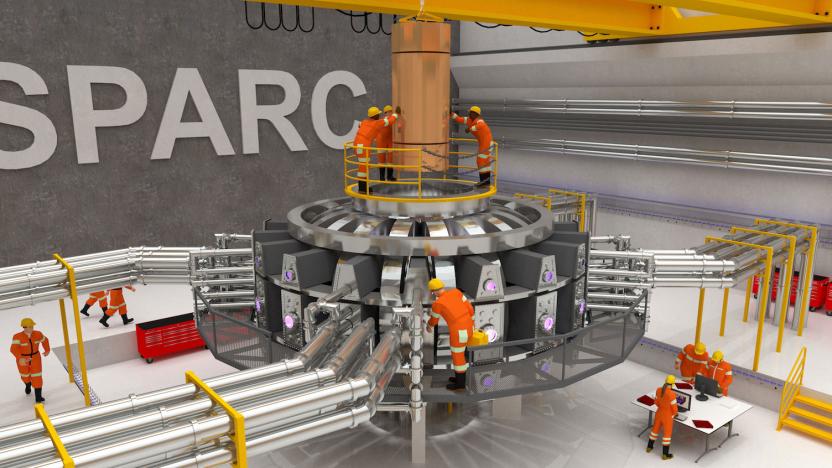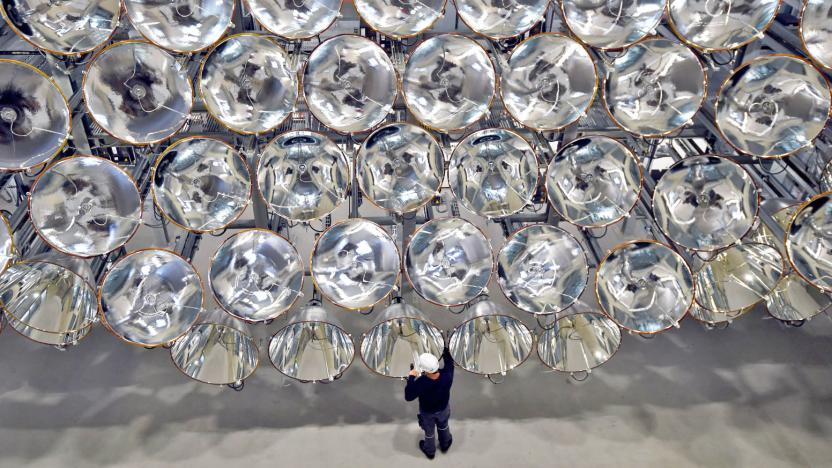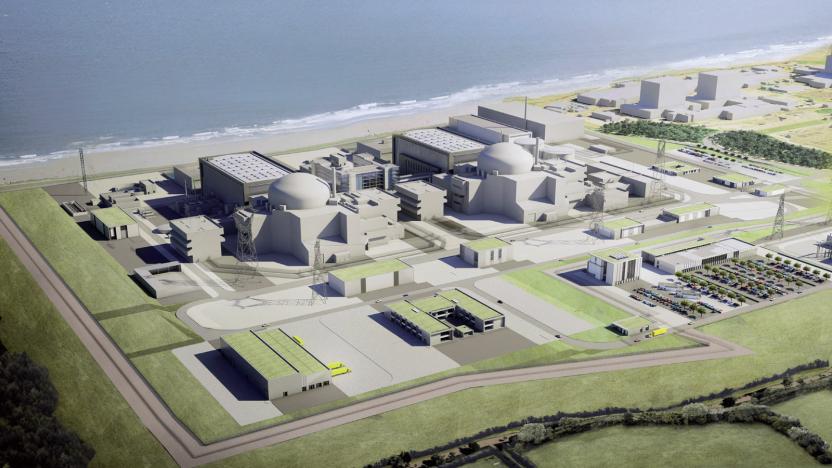PowerPlant
Latest

Electrical fault at power plant turned New York’s skyline blue
Last night, people across New York City spotted an eerie light show when the night sky was lit up by a bright, pulsing blue light. Images and videos of the event quickly flooded social media, leaving many in and outside of New York wondering just what was going on. The culprit was identified shortly thereafter -- a Con Edison power plant in Astoria, Queens. And while the bright blue light was initially believed to be the result of an explosion at the plant, the company said this morning that it was caused by an "electrical fault" that caused an arc flash.

MIT experts pioneer a way to recover drinking water from power plants
Water accounts for around 70 percent of the Earth's surface, but it's still not reaching those who need it most: three billion people live in water-stressed areas or lack access to drinking water. Things are starting to look up, however. Recent efforts from CSIRO, Belgian university researchers, and now, a system envisioned by MIT engineers are all pioneering new ways to generate clean H2O.

MIT embarks on ambitious plan to build nuclear fusion plant by 2033
MIT announced yesterday that it and Commonwealth Fusion Systems -- an MIT spinoff -- are working on a project that aims to make harvesting energy from nuclear fusion a reality within the next 15 years. The ultimate goal is to develop a 200-megawatt power plant. MIT also announced that Italian energy firm ENI has invested $50 million towards the project, $30 million of which will be applied to research and development at MIT over the next three years.

German researchers built a molecule-splitting artificial sun
Scientists from the German Aerospace Center (DLR) are testing a novel way to generate hydrogen, a potential green energy source, by using a massive array of lights normally found in movie theaters.

Mammoth UK nuclear plant receives final government thumbs-up
Eight years after it was first proposed, the UK government today gave the final go-ahead for Hinkley Point C, a new nuclear power plant to be built in Somerset. The two-reactor site is expected to become operational in 2025, at which point the majority of live nuclear power stations in the UK will be decommissioned, or only a few years away from the same fate. Point C is slated to generate 3,200 megawatts -- roughly 7 percent of the UK's total consumption and well over double the output of any currently operational site. The first new nuclear plant to be built in the UK in decades, it'll also be one of the priciest projects the world has even seen, with conservative estimates putting construction costs alone at £18 billion.

GE's robotic inspector dives in nuclear containment vessels
Normally when workers at the Edwin Irby Hatch Power Plant in Georgia want to inspect welds on the water-filled containment tank that houses the plant's nuclear fuel, they have stick pole-mounted inspection cameras in there while potentially exposing themselves to radiation. But now that the plant has acquired a swimming inspection-bot developed by GE and Hitachi, plant workers can check the vessel's integrity at any time while avoiding all that radiation.

Google's next data center will be a converted coal plant
Google is constructing another data center in the US, but the location it's settled on might surprise you. Instead of building a site from scratch, the company has decided to redevelop an old coal power plant in Alabama. The Widows Creek factory in Jackson County is scheduled to close in October due to changing regulations about the storage and monitoring of coal ash. It's been generating power since 1952 and Google plans to repurpose some of its infrastructure, such as the electric transmission lines, for its new data center. However, it doesn't want dirty fossil fuels powering its servers. Instead, it'll be working with local authorities to source new renewable energy projects that can feed into the electrical grid. Like its data center in Finland, which was once an old paper mill, it's a creative way to adapt a site that has already benefitted from years of investment.

MIT designs a floating, tsunami-proof nuclear plant
What's the safest place to put a nuclear reactor? Offshore, apparently. A new power plant design concept from MIT envisions a facility built on floating platforms, moored in deep water several miles off the coast. This, the concept's creators explain, lends it several crucial advantages -- making it virtually immune to earthquakes, tsunamis and meltdowns. Big promises, to be sure, but the professors' reasoning actually makes sense: in deep water, tsunami waves aren't large enough to cause significant damage, and earthquakes are usually only felt if you're standing on the earth. Floating the reactor on the ocean also gives the plant access to easy, passive cooling, what MIT's Jacopo Buongiorno calls an "infinite heat sink."

IRL: Nook Simple Touch with GlowLight and the PowerPlant portable battery pack
Welcome to IRL, an ongoing feature where we talk about the gadgets, apps and toys we're using in real life and take a second look at products that already got the formal review treatment. Does our own self-professed book collector Dan Cooper need an e-reader? No, but he might get one anyway. And do you need a portable charger with 3.6 times the capacity of an iPhone 5? Yes, or at least that's what Darren tells us.

China builds $3.7 billion, 1,373 mile power cable, how was your afternoon?
The State Grid corporation of China is constructing a power line capable of transmitting a staggering 37 billion kWh per year. The record-breaking cable stretches from the power rich Hami Prefecture in Xinjiang to the industrial Zhengzhou in its east -- part of an area that's been suffering from power shortages since March 2011, according to China Daily. Costing a twitch-inducing $3.7 billion, when it's completed in 2014, it'll be the most capacious link in the world. Rather than rest on that particular laurel, the company is commencing work on a second, slightly smaller line that'll be used to transmit wind and solar power from Hami to the rest of the country -- here we were thinking that skipping our lie-in was an impressive feat.

GE announces hybrid power plant of the (near) future
GE's legacy dates back over a century, but, despite its old age, the company's got a fresh outlook on the future of energy production (at least according to its PR department). Earlier this week, the outfit announced MetCap Energy Investments' plans to build a "first-of-its-kind" hybrid power plant, tapping GE's FlexEfficiency technology, which combines natural gas, wind, and solar thermal power. The plant, planned for completion in Turkey in 2015, will produce enough energy, according to GE, to power 600,000 homes, and could lead to plant efficiency greater than 70 percent. What's more, the company promises zero liquid discharge and single-button 28-minute startup. Here's hoping this cracks up to be a better fit than NBC. Full PR after the break.

Monirobo measures radiation following nuclear crisis at Japan's Fukushima Daiichi power plant
According to a report by a Japanese news agency, a radiation monitoring robot, aptly named Monirobo, is the first non-human responder to go on-site following the partial meltdown at the Fukushima Daiichi nuclear power plant. The machine, which was developed by Japan's Nuclear Safety Technology Centre to operate at lethal radiation levels, reportedly began work Friday, enlisting a 3D camera, radiation detector, and heat and humidity sensors to monitor the extent of the damage. A second Monirobo, used to collect samples and detect flammable gases, is expected to join its red counterpart soon -- both robots are operated by remote control from distances up to one kilometer away. They join the US Air Force's Global Hawk drone in unmanned surveillance of the crisis.

Inhabitat's Week in Green: solar pyramids in UAE, Tequila turns to biofuel, and green lamps galore
Each week our friends at Inhabitat recap the week's most interesting green developments and clean tech news for us -- it's the Week in Green. Alternative energy projects powered up around the globe this week as Inhabitat showcased a series of solar pyramids designed to energize Abu Dhabi and the Netherlands rolled out plans for a bike path paved with photovoltaics. Meanwhile India announced that it will launch a series of solar-powered cellphone towers this year, and a 19-year-old American teenager created a parabolic solar death ray -- and promptly proceeded to burn down his garden shed. In other news, Tesla jolted the auto world with plans to launch its upcoming Model X in 2013, and a team of researchers from the University of Illinois discovered that the same plant that produces Tequila actually yields a pretty potent biofuel as well. We also learned that Toyota plans to power its upcoming hybrids with lighter, more powerful Lithium-Ion batteries, and we were impressed by the streamlined classic stylings of Mitsuoka's electric Himiko car. Finally, this week we washed away the winter blues by shedding light on 15 green lamps that bathe your interiors in energy-efficient illumination. We also shared 6 green lighting tips that will help you cut your energy bills and 5 tips for home renovations that will keep your house cozy in the worst winter weather.

Inhabitat's Week in Green: the power plant you can ski, and NASA's orbiting Nanosail-D
Each week our friends at Inhabitat recap the week's most interesting green developments and clean tech news for us -- it's the Week in Green. This week we saw new horizons dawn for green transportation as NASA's Nanosail-D became the first solar sail spacecraft to orbit the earth and President Obama issued a call for one million electric vehicles in his State of the Union Address. We also test drove the recently released electric Mini Cooper and took a look at several transportation breakthroughs that could clean up car emissions - researchers have developed an air pollution-fighting road treatment and Cella Energy claims to have created an emission free gas that costs $1.50 per gallon. In other news, this week Qatar showcased designs for 9 sustainable stadiums for the 2022 World Cup and BIG unveiled plans for a plant-wrapped waste to power plant that doubles as a ski slope. Super cities are on the rise in Asia as China announced plans to construct a mega-city the size of Switzerland and SOM unveiled a masterplan for a cutting-edge green tech city for Hanoi. On the other hand, Dubai's architecture of excess is fading fast as a report revealed that the emirate's world-shaped archipelago of islands is sinking into the sea. We also showcased the latest in portable tech as we brought you a brilliant Fire Department iPhone app that stands to save lives, and we rounded up our five favorite phone-charging green gadgets. And if you're looking for a case to carry it all in, check out these chic quilted iPad bags - just the thing to keep your kit cozy and protected during this month's blizzards.

Norway's Statkraft kick-starts world's first osmotic power plant
It may only produce enough power to heat an electric kettle at the moment, but Norway's Statkraft says that its new, first-of-its-kind osmotic power plant could be producing as much energy as a small wind farm by 2015, and continue to grow from there on out. To do that, the company guides fresh water and salt water into separate chambers that are divided by an artificial membrane, and when the process of osmosis takes place -- salt molecules pulling freshwater through the membrane -- the pressure is increased on the sea water side. That, of course, doesn't get you power on its own, but the pressure is apparently enough to drive a power generating turbine, and if you have enough of those you have a power plant. A bit of effort, to be sure, but the process doesn't emit any greenhouse gases, is completely renewable, and it doesn't depend on the wind or the sun being out.

AORA builds sci-fi-looking solar/hybrid plant in the Israeli desert
A company called AORA has developed a hybrid solar power plant in the Israeli desert. Comprised of a number of 100kWe base units, the operation is modular (additional units can be added) and it should be complete sometime in the next ten days. When operational, thirty mirrors will track the sun and direct its rays up to the 98.4 foot tall "flower," where the concentrated sunlight heats compressed air, which in turn drives an electric turbine. When the sun has set for the day (or if it's cloudy) the turbine can be run off of biodiesel, natural gas, or fossil fuels, allowing the plant to operate twenty-four hours. The only downside we can see is that the huge tower is sure to attract psychopaths like Lord Humungus and Wez -- so you'll want some weapons. More pics after the break.[Via Inhabitat]

75-megawatt solar plant to power "first solar city" in Florida
Given that Florida has accurately been coined The Sunshine State, it's not at all shocking to hear that America's first "solar city" will be built in the state's southwest corner. Or, at least that's the plan. According to a new report, West Palm Beach-based Kitson & Partners is currently developing a new city near Charlotte County, which will get juiced by a massive 75-megawatt solar plant. Said plant will cost around $300 million to build and will be installed by Florida Power & Light; if all goes well, homes will begin construction on a sizable plot of land dubbed Babcock Ranch by 2011. If things don't go so well, we're told that the actual power plant will still be erected and fed into the larger grid. In other words, Florida's gettin' some solar power, with or without this newfangled concrete jungle.[Via Fark]










